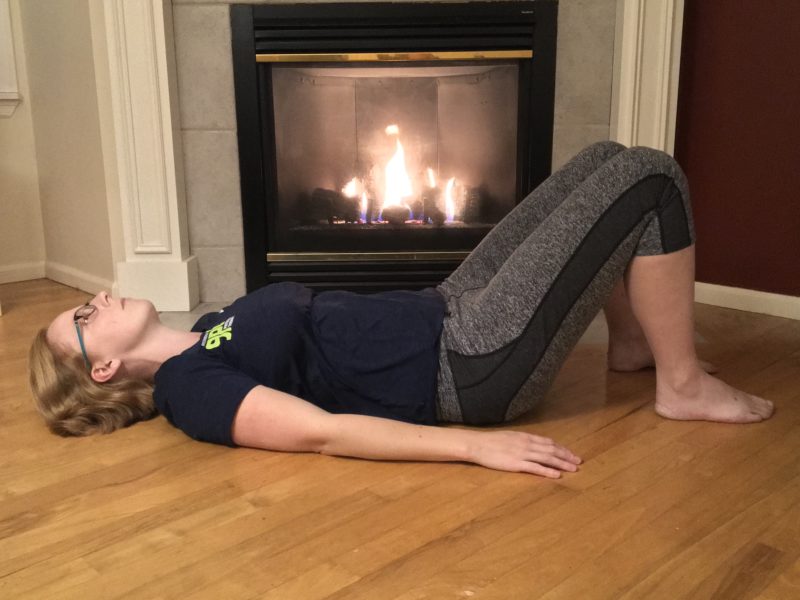
Aimee Lake, DPT
 Psoas constructive rest is a way of lengthening or stretching the psoas muscle. Lengthening this muscle can be helpful for several reasons.
Psoas constructive rest is a way of lengthening or stretching the psoas muscle. Lengthening this muscle can be helpful for several reasons.The two psoas muscles (right and left) attach to the front sides of each of the vertebrae bones in the low back. At their top end these muscles also attach to the lowest rib and connect into the diaphragm (our big breathing muscle) at that spot. At their lower end the muscles cross through the pelvis and connect near the tops of the femurs (leg bones). They are the only muscles that attache to the spine at one end and the leg on the other; other muscles attach between the spine and pelvis or between the pelvis and the leg.
One reason it is important to maintain the length of the psoas is that most of the large nerves that come out of our low back spine have to run through this muscle. These are the nerves to our internal organs, pelvic organs, and many of the major nerves to our legs. If there is tension in the area these nerves can be compressed as they travel through the muscles. Because of this, a tight psoas can cause seemingly unrelated symptoms including: back pain, leg pain, hip pain, bladder pain, pelvic pain, and digestive issues. It can also contribute to PMS symptoms.
Tension in the psoas may be related to fight or flight stress in our lives. This is the stress that occurs when a car runs a red light and almost hits you in the intersection or when you’re running late and barely catch the bus or when your boss berates you for something that wasn’t under your control. Animals will often discharge stressful energy from their bodies by shaking. Picture the poor dog shaking in the bathtub during 4th of July fireworks. We also undergo physically stressful situations on a daily basis but we don’t tend to shake. All of that energy has to be housed somewhere and the psoas is a common place to hold that internal tension. Maintaining a flexible psoas can help us manage internal stress more effectively.
The psoas can become short and tight from excessive time spend sitting. It will shorten if a person sleeps on their side because of how the legs are positioned. And it can become tight if it is used as a primary stabilizing muscle for the spine. Generally the back and stomach muscles are responsible for stabilizing the spine and trunk. However if these muscles are weak or inhibited, the psoas can help stabilize the spine because it has attachment points to all of the lumbar spine vertebrae.
So keeping the psoas long and flexible is very important. How does one stretch this muscle since it lives in the core behind the intestines and kidneys? It’s hard to reach.
This is where psoas constructive rest comes in. This technique was invented as part of the Alexander Technique, which is a method for ridding the body of extra tension. You can read more about it here. The constructive rest position places your body in such a way to passively lengthen and relax the psoas muscles.

***If you find you can’t fully relax with your feet positioned this way try resting with your calf muscles up on a chair or the couch and knees bent. This is a good modification if the muscle is extremely tight or the original position just isn’t comfortable.